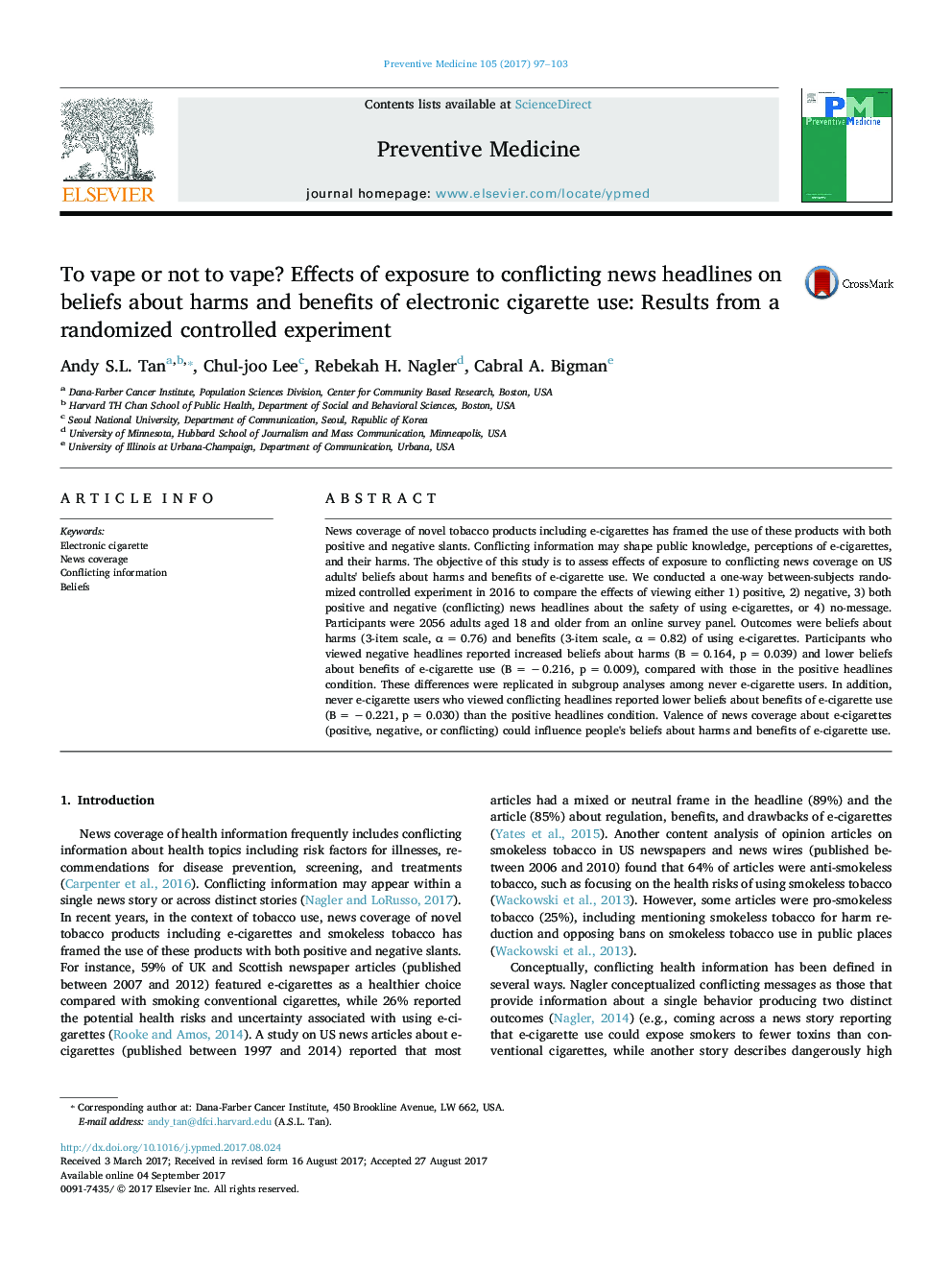| Article ID | Journal | Published Year | Pages | File Type |
|---|---|---|---|---|
| 5635467 | Preventive Medicine | 2017 | 7 Pages |
Abstract
News coverage of novel tobacco products including e-cigarettes has framed the use of these products with both positive and negative slants. Conflicting information may shape public knowledge, perceptions of e-cigarettes, and their harms. The objective of this study is to assess effects of exposure to conflicting news coverage on US adults' beliefs about harms and benefits of e-cigarette use. We conducted a one-way between-subjects randomized controlled experiment in 2016 to compare the effects of viewing either 1) positive, 2) negative, 3) both positive and negative (conflicting) news headlines about the safety of using e-cigarettes, or 4) no-message. Participants were 2056 adults aged 18 and older from an online survey panel. Outcomes were beliefs about harms (3-item scale, α = 0.76) and benefits (3-item scale, α = 0.82) of using e-cigarettes. Participants who viewed negative headlines reported increased beliefs about harms (B = 0.164, p = 0.039) and lower beliefs about benefits of e-cigarette use (B = â 0.216, p = 0.009), compared with those in the positive headlines condition. These differences were replicated in subgroup analyses among never e-cigarette users. In addition, never e-cigarette users who viewed conflicting headlines reported lower beliefs about benefits of e-cigarette use (B = â 0.221, p = 0.030) than the positive headlines condition. Valence of news coverage about e-cigarettes (positive, negative, or conflicting) could influence people's beliefs about harms and benefits of e-cigarette use.
Related Topics
Health Sciences
Medicine and Dentistry
Complementary and Alternative Medicine
Authors
Andy S.L. Tan, Chul-joo Lee, Rebekah H. Nagler, Cabral A. Bigman,
